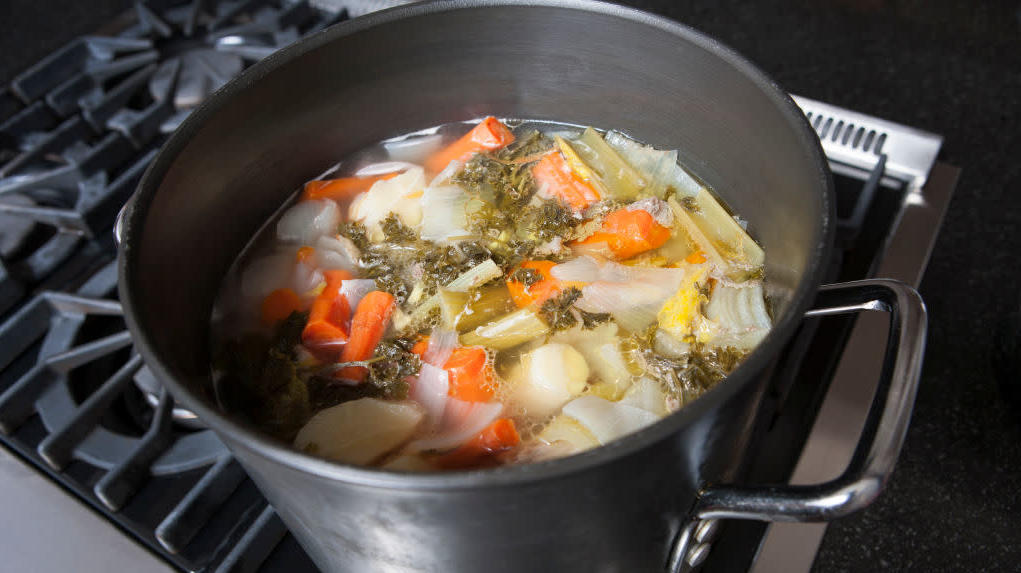Why You Should Keep A Stock Bag In Your Freezer
Packaged stock is never as good as the homemade kind, but even though I know this, I rarely have quarts of fresh stock in my kitchen. Things might be different if I cooked with stock every day, because I would never have to worry about it languishing and spoiling in the back of my fridge. I could package it into quart containers and keep it in my freezer, but that would mean less room for ice cream. I could also, theoretically, can my own stock for long-term storage in my nonexistent pantry, just as I could also theoretically milk my own cows or mill my own grain. It just isn't going to happen.
Like most people, this culinary professional relies on shelf-stable boxes of premade stocks and jars of high-quality bouillon, which are convenient and not too shabby. Used on their own, they do a fine job in most recipes where stock is called for, but whenever I'm making something where stock is meant to shine (like one-pot pastas, risotto, and soup), I give the stock a little more "oomph" by pouring it into a pot with some vegetable scraps and simmering for at least 10 minutes. And while I have no room in my freezer for containers of homemade stock, I have plenty of room for my handy-dandy stock bag, and your freezer has room for one, too.
My stock bag is a heavy-duty reusable zip-top from Smelly Proof. Aside from being more eco-friendly than a disposable bag, these things are flexible enough to fit into any odd space you can find in your freezer without accidentally popping open and letting the contents get freezer burned. Whenever I cook, I take all my onion peels, carrot trimmings, mushroom stems, and bits of food that would ordinarily be destined for the compost bin (which, like my pantry, is also nonexistent) and toss them in the stock bag. Whenever I'm cleaning out my fridge and find shriveled-up herbs or vegetables that are just past their prime, they go in the bag, too. Sprouting garlic? Stock bag. Wimpy scallions? Stock bag. That red onion you cut a few slices off for sandwiches before sticking it in the fridge and forgetting all about it? Stock bag. When I finish off a rotisserie chicken, I'll cut up the carcass and throw that in there, too. I'll even throw in the bones that are leftover after a night of Popeyes chicken.
Now, not everything can go into a stock bag. I don't add things like potato peels, or any vegetables that have strong flavors that don't always play nice with others, like asparagus. I also don't add anything moldy or obviously rotten, because not all food can be saved. This is one of those cooking tips that forces you to rely on your best judgement, so only add scraps of vegetables you think would taste good in stock, particularly aromatics you cook with regularly, like onions, carrots, celery, and garlic.
When it's time to make your packaged stock sing, just toss a handful or two of these scraps in the pot, and don't worry about exact measurements or proportions; the stock is already well seasoned, so all you're doing is freshening it up a little bit while helping alleviate your guilt about food waste.
